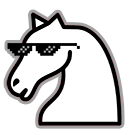

Google en passant


Google en passant


The Finals has been my default game — if none of my friends are playing anything else — since it launched
I’m sure there were other consoles that did it, but the one I remember is the NES; it had a physical switch on it for channel 3 or 4, and you had to have your TV tuned to the respective channel to get the game to show up. As to why that was necessary on a technical level, I’m not sure. But it was a thing you had to do.
I remember abusing the pause bug, so I don’t actually remember how hard it was without that


A lot of the complexity came from around various scenarios you could be in; my goto whenever people would ask me “Why can’t someone just make printer firmware simple?” is that you could, if you only wanted to copy in one size with one paper type, no margin changes, and never do anything else.
There’s just so many different control paths that need to act differently; many of the bugs I worked on involved scaling and margins. Trying to make sure the image ended up in a proper form before it made it to hardware (which as more complexity, ran on a different processor and OS than the backend so that it could run realtime) when dealing with different input types (flatbed scanner vs a document feeder, which could be a everyday size, or like 3 feet long) different paper sizes, scaling, and output paper. I mainly worked on the copy pipeline, but that also was very complex, involving up to, something like, 7 different pieces in the pipe to transform the image.
Each piece in the pipeline was decently complex, with a few having their own team dedicated to them. In theory, any piece that wasn’t an image provider or consumer could go in any order — although in practice that didn’t happen — so it had to be designed around different types of image containers that could come in.
All of that was also working alongside the job framework, which communicated with the hardware, and made sure what state jobs were in, when different pieces of the pipeline could be available to different jobs, locking out jobs when someone is using the UI in certain states so that they don’t think what’s printing is their job, and handling jobs through any of other interface (like network or web.)
That’s the big stuff that I touched; but there was also localization; the UI and web interfaces as a whole; the more OS side of the printer like logging in, networking, or configuration; and internal pages — any page that the printer generates itself, like a report or test page. I’m sure there’s a lot more than that, and this is just what I’m aware of.


Just what was in the main repo (at least one other repo was used for the more secure parts of the code) was a little over 4 million lines. But yeah there’s a lot of complexity behind printers that I didn’t think about until I had worked on them. Of course that doesn’t mean they have to be terrible, it’s just easier to fall into without a good plan (spoiler alert: the specific firmware I was working in didn’t have a good plan)


I used to work on printer firmware; we were implementing a feature for a text box for if you scanned a certain number of pages on a collated, multi-page copy job. The text box told you it would print the pages it had stored to free up memory for more pages; after those pages had printed, another text box would come up asking if you wanted to keep scanning pages, or just finish the job.
The consensus was that it would be a relatively simple change; 3 months and 80 files changed — with somewhere in the ballpark of 10000-20000 lines changed, — proved that wrong.
They actually don’t have last names; their full names are Mario and Luigi.


Awesomenauts
It’s a 3v3 2D platformer lane-pusher with an art style reminiscent of a saturday-morning cartoon. The upgrade system is very simple compared to other lane-pushers, and the games tend to go a lot quicker (15-25 minutes.) It’s very intuitive to get into, but still has room for a lot of expression of skill.
Unfortunately Ronimo (the company who made it) went bankrupt in late August, so the matchmaking server went down in September; but recently Atari bought the rights to the IP, so it’s possible it will come back soon.
Purge (https://youtube.com/@PurgeGamers) is pretty good. He typically posts full, un-cut dota games, and is lower energy throughout. There’s not big volume or tone changes, and they’re long enough that you should always be able to fall asleep during them.
This is how I approach these: that square only has a single traffic light, not multiple traffic lights like the prompt is asking for
When I managed a pool, I remember the Virginia Graeme Baker act being something I was told about pretty early on; it was a prevalent enough of a thing that sometimes trying to start up my spa’s motor wouldn’t provide a clear enough suction, and the motor would shut off for safety. A properly managed pool should never have had this risk.